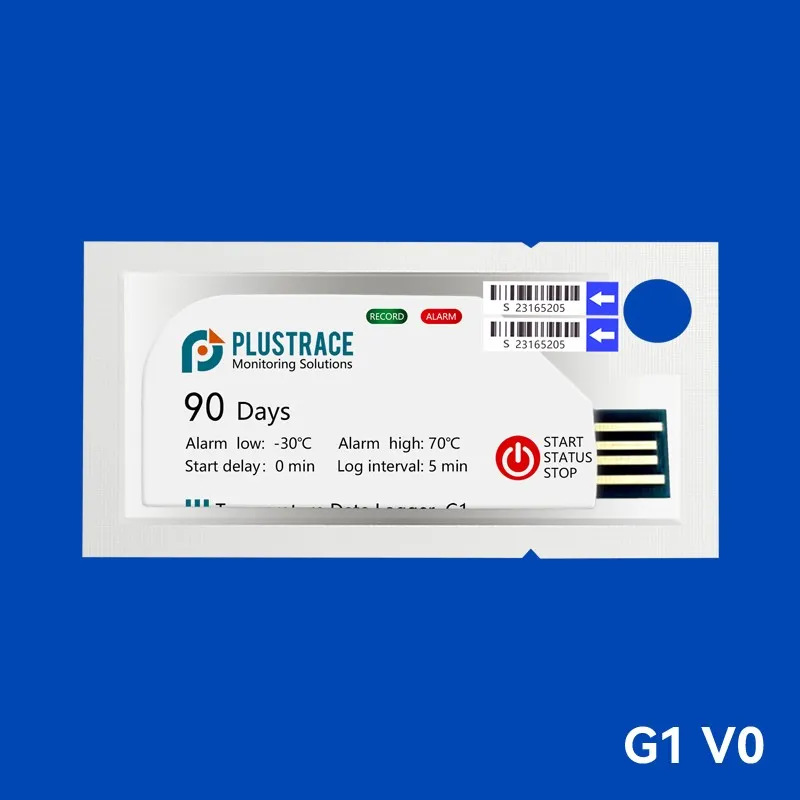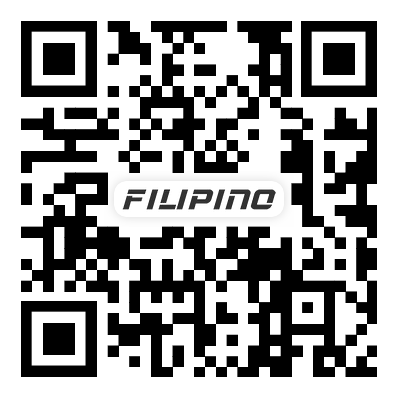Everything You Need to Know About Temperature Data Loggers
2024-12-03
In today’s data-driven world, monitoring and recording temperature variations is crucial across various industries. Whether it's ensuring the safety of perishable goods, maintaining optimal conditions in laboratories, or safeguarding sensitive electronic components, temperature data loggers play an indispensable role. This comprehensive guide delves into everything you need to know about temperature data loggers, from their fundamental principles to their diverse applications and how to choose the right one for your needs.
Table of Contents
1. [What Are Temperature Data Loggers?]
2. [How Do Temperature Data Loggers Work?]
3. [Types of Temperature Data Loggers]
4. [Key Features to Consider]
5. [Applications of Temperature Data Loggers]
6. [Advantages and Limitations]
7. [How to Choose the Right Temperature Data Logger]
8. [Future Trends in Temperature Data Logging]
9. [Conclusion]

What Are Temperature Data Loggers?
Temperature data loggers are electronic devices designed to record temperature data over time. They are equipped with sensors that detect temperature changes and store the recorded data for later analysis. These devices are essential for maintaining quality control, ensuring compliance with regulations, and optimizing processes across various sectors.
Key Components:
- Temperature Sensor: Detects and measures temperature.
- Microcontroller: Processes and manages the data.
- Memory Storage: Stores the recorded temperature data.
- Power Source: Typically batteries, providing long-term operation.
- Communication Interface: USB, Bluetooth, or wireless for data retrieval.
How Do Temperature Data Loggers Work?
The operation of a temperature data logger involves several steps:
1. Measurement: The temperature sensor continuously monitors the surrounding temperature.
2. Data Processing: The microcontroller processes the sensor data at predefined intervals.
3. Storage: The processed data is stored in the device’s memory.
4. Power Management: The device manages its power consumption to ensure longevity.
5. Data Retrieval: Users can download the recorded data via a connected interface for analysis.
Example Workflow:
- A data logger placed in a refrigerated warehouse records temperatures every minute.
- The microcontroller processes each temperature reading and stores it in internal memory.
- At the end of the day, the data is retrieved using a USB connection to verify that temperatures remained within the required range.
Types of Temperature Data Loggers
Temperature data loggers come in various forms, each suited to specific applications and environments. Understanding the different types helps in selecting the right device for your needs.
1. Standalone Data Loggers
- Description: Portable and self-contained units that operate independently.
- Use Cases: Environmental monitoring, transportation, and field studies.
2. Wireless Data Loggers
- Description: Transmit data wirelessly to a central system or cloud.
- Use Cases: Large-scale industrial monitoring, smart agriculture, and HVAC systems.
3. USB Data Loggers
- Description: Connect directly to a computer via USB for data transfer.
- Use Cases: Short-term projects, laboratory experiments, and quality control.
4. Battery-Powered Data Loggers
- Description: Operate on batteries, suitable for remote or inaccessible locations.
- Use Cases: Wildlife monitoring, remote weather stations, and archival storage.
5. Networked Data Loggers
- Description: Part of a networked system, allowing multiple loggers to communicate and share data.
- Use Cases: Smart buildings, industrial automation, and large-scale research projects.
6. Multi-Channel Data Loggers
- Description: Capable of recording multiple temperature points simultaneously.
- Use Cases: Complex environments with multiple temperature zones, such as greenhouses or multi-room facilities.
Key Features to Consider
When selecting a temperature data logger, several features can influence its effectiveness and suitability for your specific application.
1. Accuracy and Precision
- Importance: Ensures reliable data for critical applications.
- Consideration: Look for loggers with high accuracy (±0.1°C) for sensitive measurements.
2. Memory Capacity
- Importance: Determines how much data can be stored before needing retrieval.
- Consideration: Choose based on the frequency of logging and project duration.
3. Logging Interval
- Importance: Defines how often temperature is recorded.
- Consideration: Short intervals (seconds) for dynamic environments; longer intervals (minutes) for stable conditions.
4. Power Source and Battery Life
- Importance: Affects the duration of data logging without maintenance.
- Consideration: Battery life should match the logging period; rechargeable options are beneficial.
5. Environmental Resistance
- Importance: Ensures durability in harsh conditions.
- Consideration: Look for IP-rated devices for water and dust resistance, and temperature-resistant casings.
6. Data Retrieval Method
- Importance: Ease of accessing and analyzing data.
- Consideration: Choose between USB, wireless, or cloud-based retrieval based on convenience and infrastructure.
7. Size and Portability
- Importance: Impacts ease of placement and concealment.
- Consideration: Compact models for discreet monitoring and larger units for robust environments.
8. User Interface and Software Compatibility
- Importance: Facilitates data management and analysis.
- Consideration: User-friendly interfaces and compatibility with common software like Excel, proprietary applications, or APIs for integration.
Applications of Temperature Data Loggers
Temperature data loggers are versatile tools used across various industries to ensure optimal conditions and compliance with standards.
1. Food and Beverage Industry
- Purpose: Monitor storage and transportation conditions to maintain product quality and safety.
- Examples: Tracking refrigerated trucks, storage rooms, and processing areas.
2. Pharmaceuticals and Healthcare
- Purpose: Ensure the integrity of temperature-sensitive medications and vaccines.
- Examples: Cold chain monitoring, laboratory experiments, and medical equipment maintenance.
3. Environmental and Climate Research
- Purpose: Collect accurate temperature data for studies and forecasting.
- Examples: Wildlife habitats, weather stations, and oceanography.
4. Manufacturing and Industrial Processes
- Purpose: Maintain optimal operating conditions and prevent equipment overheating.
- Examples: Machinery monitoring, HVAC systems, and chemical processing.
5. Telecommunications and Data Centers
- Purpose: Prevent equipment failure due to overheating.
- Examples: Server room monitoring, telecommunications towers, and network hubs.
6. Transportation and Logistics
- Purpose: Ensure safe and compliant transport of temperature-sensitive goods.
- Examples: Monitoring shipping containers, refrigerated vehicles, and cargo holds.
7. Research and Development
- Purpose: Gather precise temperature data for experiments and product testing.
- Examples: Material testing, electronics development, and biotech research.
Advantages and Limitations
Understanding the benefits and constraints of temperature data loggers helps in making informed decisions and maximizing their utility.
Advantages:
1. Continuous Monitoring
- Provides real-time data and long-term trends.
2. Accuracy and Reliability
- Delivers precise measurements essential for critical applications.
3. Data Storage and Analysis
- Enables extensive data collection and facilitates in-depth analysis.
4. Remote Monitoring
- Wireless and networked loggers allow for monitoring across vast or inaccessible areas.
5. Cost-Effective
- Reduces the need for manual temperature checks, saving time and labor costs.
Limitations:
1. Initial Cost
- High-quality data loggers can be expensive upfront.
2. Battery Dependency
- Reliance on batteries may require regular maintenance and replacement.
3. Data Management
- Large volumes of data may require robust systems for storage and analysis.
4. Environmental Constraints
- Extreme conditions can affect device performance and longevity.
5. Technical Complexity
- Some models may require technical expertise for setup and data interpretation.
How to Choose the Right Temperature Data Logger
Selecting the appropriate temperature data logger involves evaluating your specific needs and understanding the features that best align with your application.
1. Define Your Requirements
- Purpose: Determine the primary use—industrial monitoring, research, transportation, etc.
- Environment: Assess the conditions where the logger will operate—temperature ranges, humidity, exposure to elements.
2. Determine the Required Accuracy
- Critical Applications: Higher accuracy (±0.1°C) for pharmaceuticals or scientific research.
- General Monitoring: Moderate accuracy (±0.5°C to ±1°C) for environmental or food storage.
3. Choose the Appropriate Sensor Type
- Thermocouples: Wide temperature ranges, industrial applications.
- RTDs (Resistance Temperature Detectors): High accuracy, laboratory settings.
- Thermistors: High sensitivity, limited temperature ranges.
- Digital Sensors: Easy integration with microcontrollers and data loggers.
4. Evaluate Data Storage and Retrieval Needs
- Local Storage: SD cards for standalone loggers.
- Cloud Integration: For real-time data access and remote monitoring.
- Connectivity Options: USB, Bluetooth, Wi-Fi, or cellular.
5. Consider Power Requirements
- Battery Life: Long-term projects may require energy-efficient models.
- Power Source: Options for rechargeable batteries or external power sources.
6. Assess Durability and Build Quality
- Ingress Protection (IP) Rating: Ensure resistance to water and dust.
- Material Strength: Robust construction for harsh environments.
7. Review Software and Compatibility
- User-Friendly Interfaces: Intuitive software for data analysis.
- Integration Capabilities: Compatibility with existing systems and platforms.
8. Budget Constraints
- Cost vs. Features: Balance between necessary features and affordability.
- Long-Term Investment: Consider the total cost of ownership, including maintenance and data management.
Future Trends in Temperature Data Logging
The field of temperature data logging is continually evolving, driven by advancements in technology and increasing demand for precision and connectivity.
1. Internet of Things (IoT) Integration
- Smart Monitoring: Enhanced connectivity allows for real-time data transmission and remote control.
- Predictive Maintenance: Utilizing data analytics to predict and prevent equipment failures.
2. Wireless and Battery-Free Technologies
- Energy Harvesting: Devices powered by ambient energy sources, reducing maintenance needs.
- Advanced Wireless Protocols: Improved range and reliability for data transmission.
3. Miniaturization and Portability
- Compact Designs: Smaller, more portable loggers for discreet monitoring.
- Wearable Devices: Integration into wearable technology for personal temperature tracking.
4. Enhanced Data Security
- Secure Data Transmission: Protecting sensitive information from unauthorized access.
- Blockchain Integration: Ensuring data integrity and traceability.
5. Artificial Intelligence and Machine Learning
- Data Analysis: Automated pattern recognition and anomaly detection.
- Adaptive Systems: Devices that adjust logging parameters based on environmental changes.
6. Sustainable and Eco-Friendly Solutions
- Recyclable Materials: Using sustainable materials in device construction.
- Energy Efficiency: Designing devices with lower power consumption to extend battery life.
Conclusion
Temperature data loggers are essential tools that provide invaluable insights across a multitude of industries. From ensuring the safety of perishable goods to maintaining optimal conditions in research laboratories, these devices offer precision, reliability, and efficiency. By understanding the various types, key features, and applications of temperature data loggers, you can make informed decisions to enhance your operations and maintain high standards of quality and compliance.
As technology continues to advance, temperature data loggers will become even more integrated, intelligent, and indispensable in our data-centric world. Investing in the right data logger not only safeguards your processes and products but also empowers you with the data necessary to drive informed decisions and continuous improvement.


